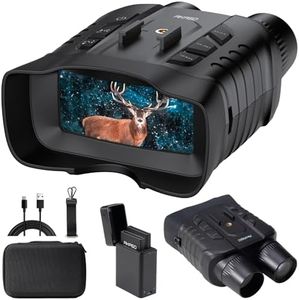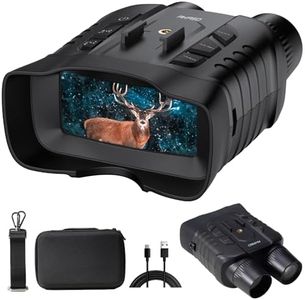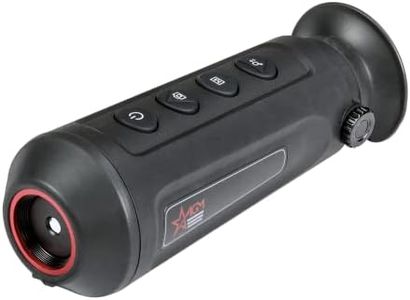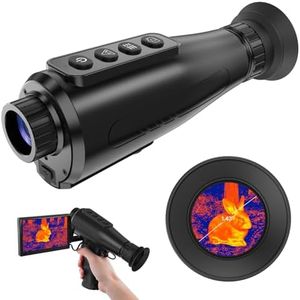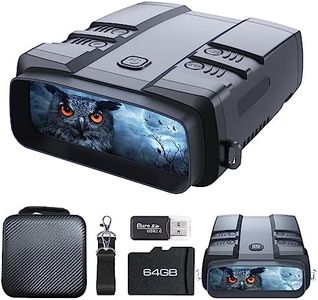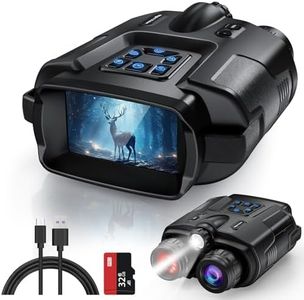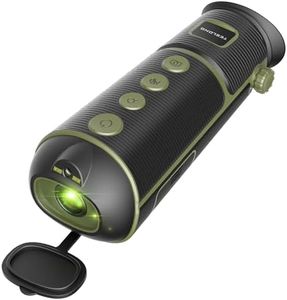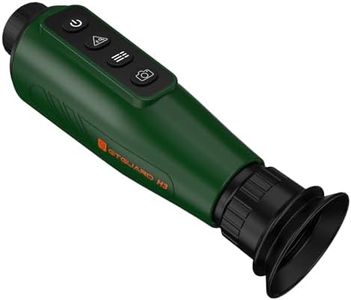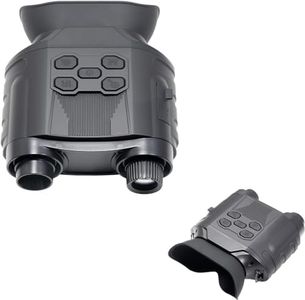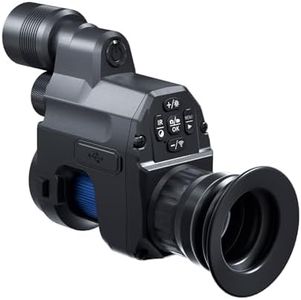We Use CookiesWe use cookies to enhance the security, performance,
functionality and for analytical and promotional activities. By continuing to browse this site you
are agreeing to our privacy policy
10 Best Night Scopes
From leading brands and best sellers available on the web.Buying Guide for the Best Night Scopes
When choosing a night scope, the process can seem overwhelming because of the technology and the many uses they cover. It's important to start by knowing exactly how and where you'll use it—hunting, wildlife watching, security, or simply exploring at night. By focusing on your real needs, it becomes easier to weigh the critical features and make a choice that will truly serve you in the darkness.Image Intensifier GenerationThis refers to the technology level behind the night vision capability. Generations range from Gen 1 (basic) up to Gen 3 and beyond (advanced). Lower generation scopes offer shorter range and less clarity, making them better for casual or short-range observation. Higher generation devices give a much clearer, brighter view at longer distances and in very low light conditions, which professionals or regular users will benefit from. If your use is occasional or just around your backyard, a lower generation may be fine. If you rely on detail or need to spot objects far away, a higher generation is better.
MagnificationMagnification is about how much closer the scope makes things appear. Low magnification (1-3x) offers a wider field of view and is good for moving targets and close-to-medium distances. High magnification (4x and above) is better for spotting distant subjects but can make the scope heavier and harder to manage. If your tasks involve moving targets or large areas, lower magnification is preferable. For steady, long-distance spotting, higher magnification fits best.
Field of ViewField of view is the width of the area you can see through the scope, typically measured in degrees. A wider field of view is ideal for scanning broad areas or tracking things that move quickly, while a narrower field of view is better for focusing on distant or stationary subjects. Decide if you need to observe wide spaces or hone in on distant points, as this will determine how narrow or wide your field of view should be.
Infrared IlluminatorAn infrared (IR) illuminator acts as a flashlight for the scope, helping you see in total darkness when there’s no natural light. Some scopes have built-in illuminators while others allow you to attach them. If you expect to use the scope in areas without any ambient light or indoors, an IR illuminator is essential. If there's plenty of moonlight or outdoor light where you'll use it, this feature is less critical but still useful.
ResolutionResolution determines how clear and sharp the image will be. Higher resolution allows you to see more detail, which can be important for identifying animals or objects. Lower resolution is acceptable for basic detection or navigation. If identifying details is important for your activities, choose a scope with a higher resolution value.
Detection RangeDetection range is the maximum distance at which you can spot an object with the night scope. Scopes with longer ranges are needed for open fields or large properties, while shorter ranges are suitable for backyard use or observation within small areas. Think about the distances you’ll typically be scanning to pick a detection range that matches your needs.
Weight and SizeWeight and size affect how easy the scope is to handle, especially if you’ll be moving a lot or mounting it on a helmet or weapon. Lighter, more compact scopes are easier to carry for long periods, while larger ones can offer more features but may become a hassle. Choose a weight and size you can comfortably handle for the activity and duration you expect.
